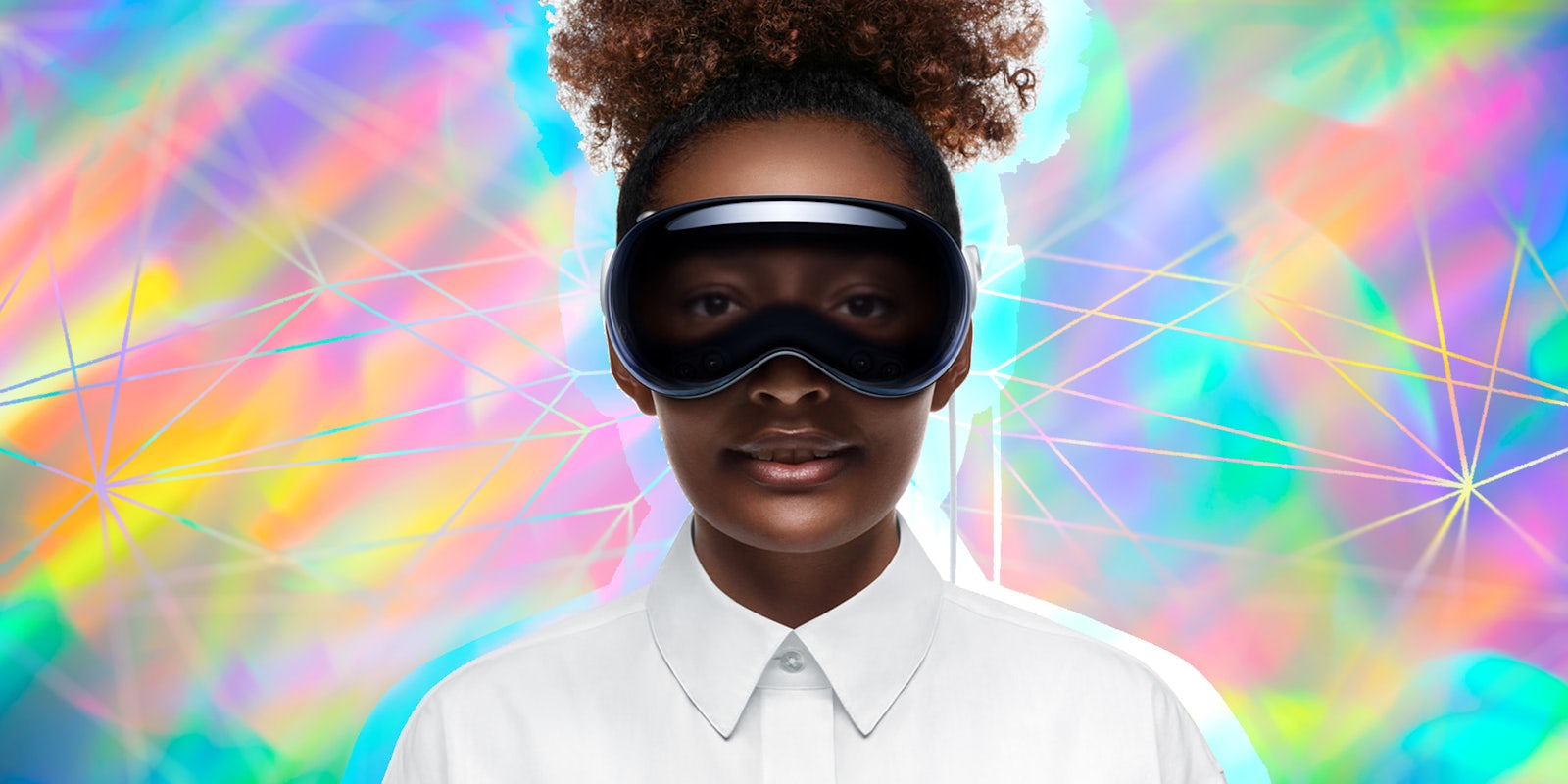Apple’s new Vision Pro headset has been turning heads since its launch last Friday—with videos going viral of awkward users pinching their fingers and bobbing their heads in public as they try to navigate the “spatial OS” generated by the headset’s 23 million pixel micro-OLED display.
But the immersive computing experience is also churning stomachs, with users complaining on social media about motion sickness while inside the display, and disorientation after surfacing back into the real world.
Despite positive feedback from redditors on the r/VisionPro subreddit, some users are still struggling with the unsettling, nauseating feeling that comes with disengaging, despite praising Apple’s product for feeling less awkward than other VR headsets.
“I still get motion sick after just ~10-15 minute sessions,” posted u/soysauce44. “Huge bummer and unfortunately a deal breaker for me … Feels maybe slightly less bad to me than other VR headsets, but not enough that I’d be able to use consistently.”
“I just finished a demo and I got very subtle motion sickness,” u/mistergrumbles reported in another thread. “I also found the … [field of vision] to create a bit of a claustrophobic feel.”
That user initially thought the problem was due to the fact that they wear prescription reading glasses. However, after trying again and getting a prescription lens attachment on the Vision Pro, the motion sickness just got worse.
“[B]ased on my first test, despite all the glowing reviews it’s still very much a VR headset, and if you sometimes get kind that light, queasy feeling watching a 3D movie, then you might have the same feeling with this.”
“At first, almost fell out of my chair due to motion sickness,” reported u/kylepod, though the intensity of the feeling went down with time.
“Makes me a little motion sick when I wear the display,” said another user in a review of the headset.
“After the first two hours I just had to remove the headset,” added a different user reviewing his experience using the Vision Pro on a long flight. “It was a weird feeling mixed between slight motion sickness, head fatigue and eye strain.”
After 10 minutes and a walk around the plane, the feeling started to go away, they said, adding “I will see if this gets better over time.”
According to Apple’s support website, the Vision Pro was designed to reduce motion sickness, but a “small number of people” still suffer from it during certain experiences like watching content with fast motion.
Apple advises that users stop using the product if they’re experiencing symptoms of motion sickness like dizziness, disorientation, nausea, decreased awareness or difficulty concentrating, an upset stomach, increased salivation, headache, fatigue, or sweating.
They also recommend that you “re-orient” to your environment after using the product before doing anything that requires balance, coordination, or spatial awareness. And they recommend easing yourself into using the product, starting with using the Vision Pro for short amounts of time and less immersive experiences at first.
Over on the macrumors forum, some users weren’t convinced that the problem is all that rare.
“Whenever Apple is confronted with a tidal wave of complaints about an issue with a product, they roll out this tired old line. ‘A small number.’ Classic!” posted one user.
Others pointed out that the type of motion sickness being reported wasn’t uncommon for first-time users who are unfamiliar with the disorienting sensation of VR headsets.
A paper published on Thursday by Stanford University’s Virtual Human Interaction Lab analyzed the effects of “mixed reality” headsets, focusing their fieldwork on the Meta Quest 3 but noting that the researchers had similar experiences with other VR headsets like the Vision Pro, the Varjo XR-3, and night vision goggle technology.
The Meta Quest 3, like the Apple Vision Pro, uses so-called “passthrough” technology, where users don’t actually see the outside world at all. Instead, a camera captures a video of the world and displays it on small screens within the headset. The study found that for the Meta Quest 3, food felt distorted, people in the background seemed less present—like they were characters in a TV show—and motor tasks like pushing an elevator button became challenging.
On the macrumors forums, users pointed out that there might be a learning curve as the technology is rolled out to more and more of the general public, rather than being the domain of niche hobbyists as it’s been in the past.
“For AVP buyers with no VR experience, there is going to be quite a rude awakening here about the realities of this type of product,” posted turbineseaplane. “We’ll never know the real numbers, but I’ll bet the return rate will be through the roof.”


